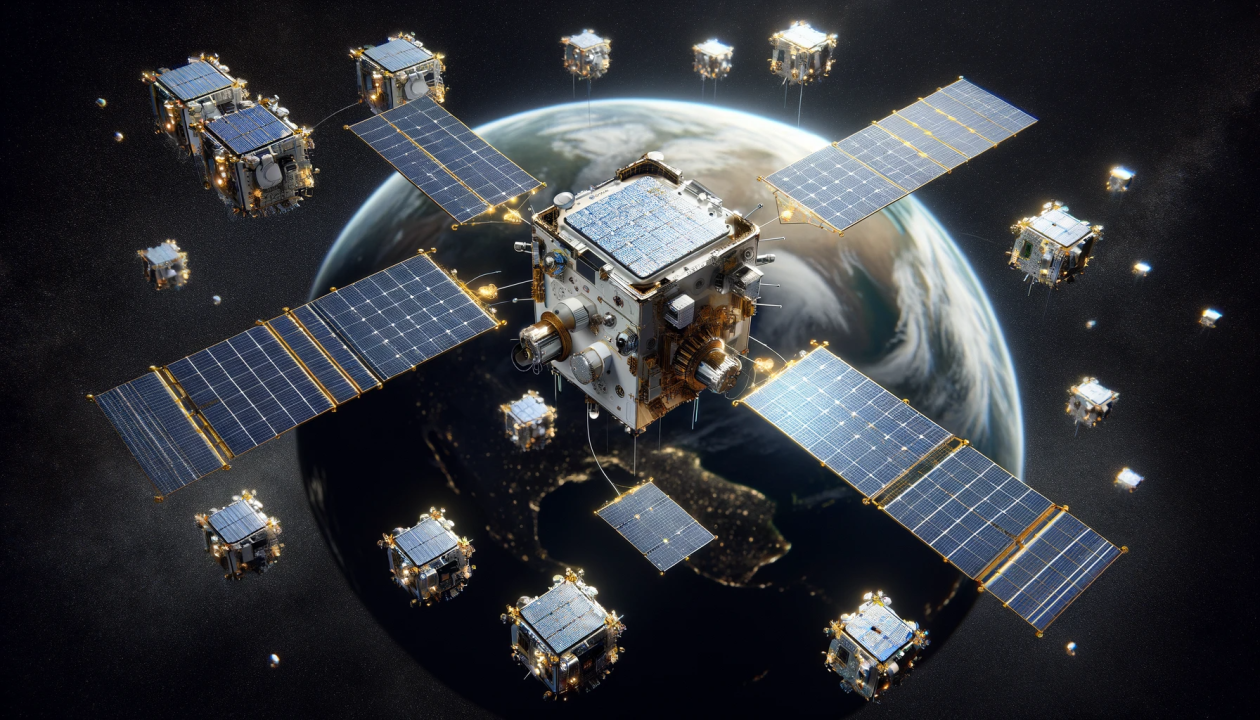By Dr. Athanasios Staveris-Polykalas
The dawn of microsatellite technology marks a new era in space exploration, offering a cost-effective, agile, and innovative approach to satellite design and deployment. This article provides an expert’s perspective on the development of microsatellite constellations, detailing the processes from inception to deployment.
Mission Design: The Blueprint of Innovation The journey begins with a clear mission objective. Whether for telecommunications, Earth observation, or scientific research, defining precise goals is crucial. These objectives shape the design, influencing factors such as payload selection, orbital configurations, and technological requirements. For example, a constellation aimed at global internet coverage would prioritize communication payloads and a Low Earth Orbit (LEO) configuration for reduced latency.
Subsystem Integration: A Symphony of Engineering A microsatellite is a culmination of several subsystems harmonized to work as a single unit. Power systems, typically solar panels complemented by batteries, must be optimized for efficiency. Propulsion systems, though optional in some designs, require careful consideration for maneuvers and end-of-life deorbiting. Communication subsystems are vital for data transmission and satellite control, often utilizing S-band and X-band frequencies for robust communication. The on-board computer serves as the brain of the satellite, processing data and executing commands, while thermal control systems maintain optimal operating conditions.
Orbital Mechanics: Choreographing the Constellation The selection of an orbit is a critical decision. Lower orbits offer advantages in terms of launch costs and latency but require more satellites for complete coverage. Higher orbits, like Geosynchronous Earth Orbit (GEO), provide broader coverage per satellite but come with increased launch costs and complexities. The constellation’s architecture must ensure optimal spacing and phasing of satellites, allowing for consistent coverage and efficient operation.
Ground Control: The Terrestrial Anchor Ground segment infrastructure, encompassing ground stations and mission control, is the terrestrial link to the constellation. Ground stations, strategically located, handle telemetry, tracking, and control (TT&C), as well as payload data downlink. The mission control center is the hub for constellation management, orchestrating satellite operations, monitoring health and status, and planning maneuvers.
Testing and Quality Assurance: The Pillars of Reliability Rigorous testing regimes are essential. This includes thermal-vacuum tests to simulate space conditions, vibration testing to ensure launch survivability, and electromagnetic interference (EMI) testing. Quality assurance at every production stage ensures each satellite meets the stringent requirements of space operations.
Launch Strategy: Gateway to the Stars Choosing an appropriate launch vehicle is a balancing act between cost, reliability, and schedule. Rideshare opportunities, such as those offered by SpaceX’s Falcon 9 or Rocket Lab’s Electron, provide cost-effective access to space. Ensuring compliance with regulatory bodies, like the FCC for communication frequencies and the ITU for orbital slots, is a critical step.
In-Orbit Operations: The Final Frontier Once deployed, the constellation enters the operational phase. This involves initial in-orbit testing, regular health checks, and, if necessary, on-orbit servicing. Data handling, a crucial aspect, involves processing, storing, and distributing the data collected by the constellation. This data, often voluminous, requires robust ground-based infrastructure for processing and analysis.
End-of-Life Strategy: Ethical Space Utilization Planning for the end-of-life of satellites is a responsibility. This involves deorbiting strategies to ensure that the satellites do not contribute to the growing concern of space debris.
Conclusion: The Path Forward Microsatellite constellations represent a paradigm shift in space technology. With the ability to provide cost-effective, comprehensive solutions, they are set to play a crucial role in the future of space exploration and commercialization. As the technology evolves, it presents an exciting frontier for innovation, exploration, and discovery.

